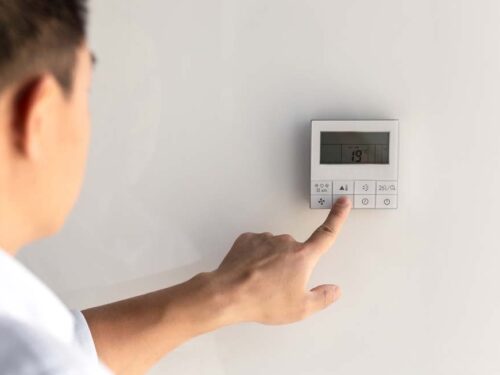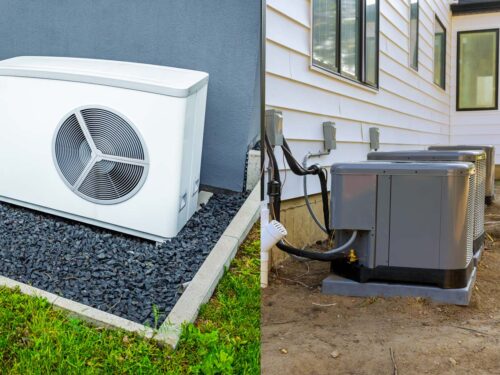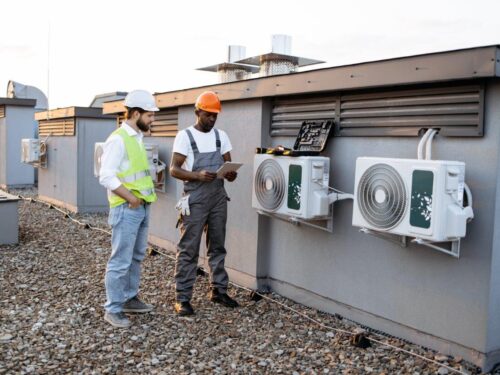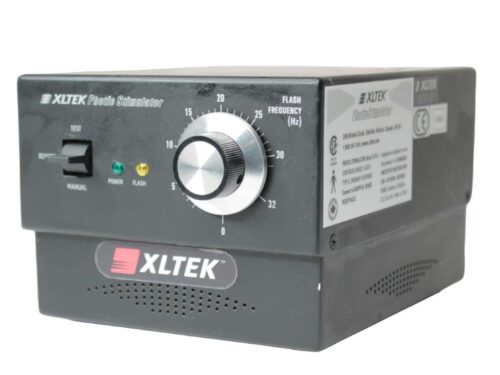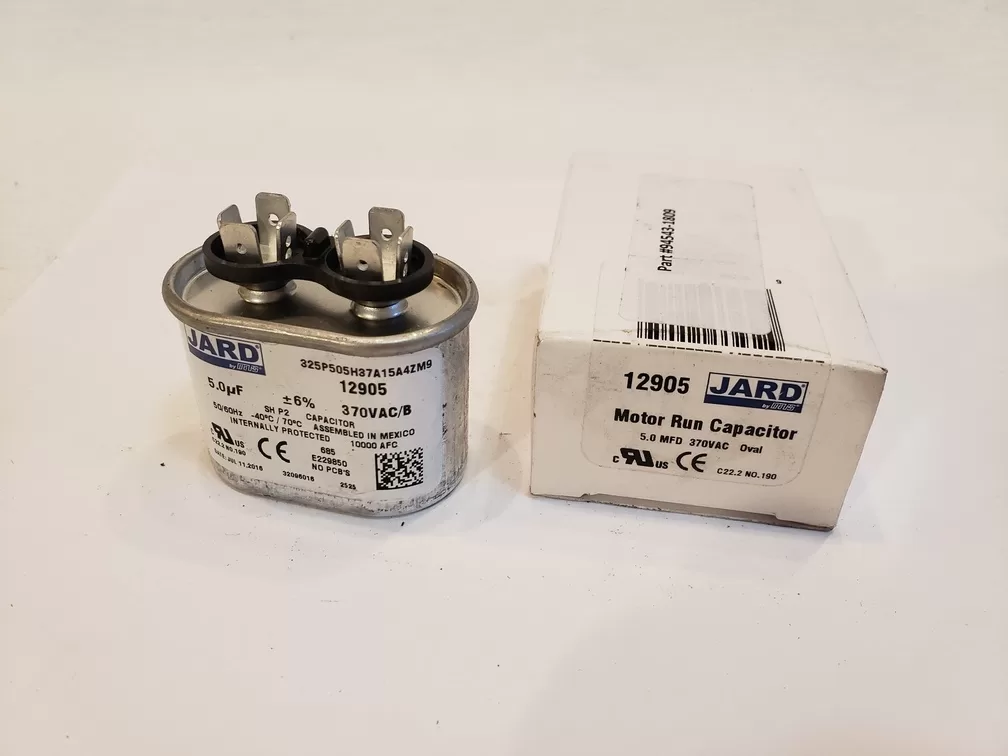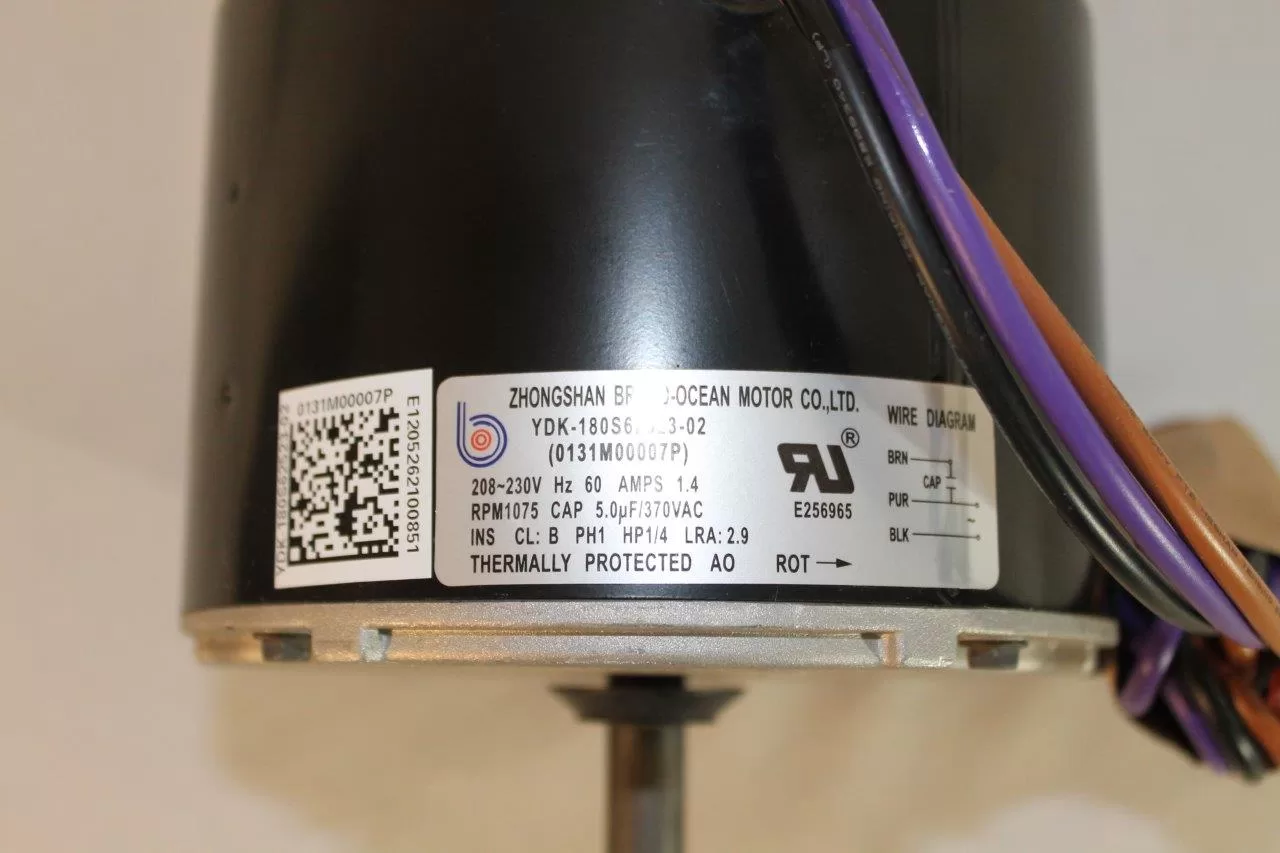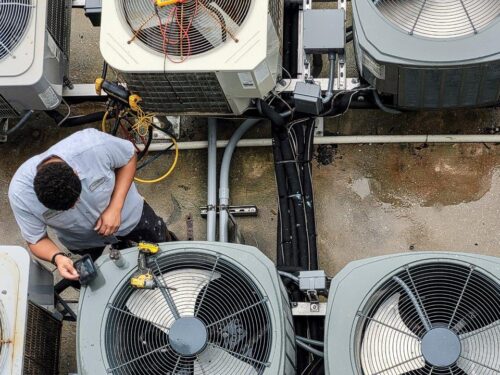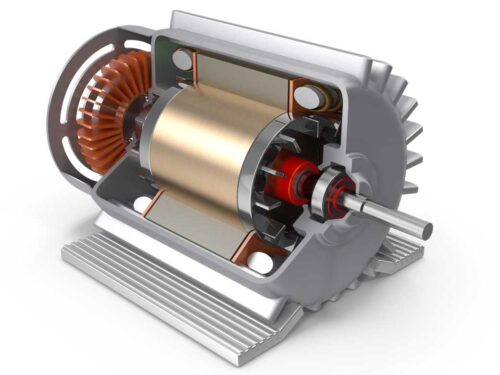Troubleshooting HVAC systems requires a systematic approach to identify and resolve issues effectively, ensuring optimal functionality and performance.
1. Understanding System Basics:
- HVAC systems comprise key components integral to heating, ventilation, and air conditioning. The furnace, acting as the heating component, generates warmth using fuel or electricity and distributes it via ductwork throughout buildings, ensuring comfortable indoor temperatures during colder periods. Conversely, the air conditioner serves as the cooling component, extracting heat from indoor air and expelling it outside, facilitating cooler environments during warmer seasons. These systems are regulated by the thermostat, the control center allowing users to set desired temperatures, thereby controlling the HVAC system’s operation for optimal comfort and energy efficiency. Ductwork functions as an air distribution network, delivering conditioned air throughout spaces, while air filters play a vital role in enhancing indoor air quality by trapping particles, allergens, and contaminants, ensuring healthier environments.
- In the context of heating, the furnace provides warmth by distributing heated air through ducts, while in cooling, the air conditioner removes heat from indoor spaces, maintaining pleasant temperatures. Ventilation is facilitated by HVAC systems, exchanging indoor and outdoor air to minimize stagnant air and maintain adequate humidity levels. Moreover, these systems contribute to air quality control, as air filters prevent airborne particles from circulating, thereby improving indoor air quality and fostering healthier indoor environments. Collectively, these fundamental components harmonize to regulate temperature, air distribution, and air quality within buildings, ensuring comfort and well-being for occupants.
2. Common HVAC Issues:
- Common HVAC issues can encompass various challenges that compromise system performance. Inadequate maintenance often leads to dirty or clogged filters, hindering airflow and reducing system efficiency. Malfunctioning thermostats can cause temperature inconsistencies, impacting comfort levels within spaces. Refrigerant leaks or low levels in air conditioners can impede cooling functions and strain the system, affecting overall performance. Faulty electrical components, such as capacitors or relays, may disrupt the system’s operation, leading to system failures or inconsistent heating or cooling. Additionally, ductwork issues, including leaks or improper insulation, can result in reduced airflow or inefficient heating and cooling distribution throughout buildings. Understanding and promptly addressing these common issues through regular maintenance and professional inspections are crucial to ensure HVAC systems operate at their best, maintaining comfort and efficiency.
3. Inspection and Assessment:
- Visual inspections and system assessments play a pivotal role in ensuring the optimal functionality of HVAC systems. These proactive measures are imperative for identifying visible issues, detecting unusual sounds, or noting irregularities in temperature and airflow. Through visual inspections, technicians can assess components such as filters, ductwork, and electrical connections, spotting signs of wear, dirt buildup, or potential damage. Additionally, unusual sounds emanating from the system can indicate underlying issues, warranting immediate attention to prevent further damage or system failures. Irregularities in temperature or airflow, whether in specific areas or throughout the building, can signify potential problems that need timely intervention. Regular assessments enable early detection of these issues, facilitating prompt repairs or maintenance to prevent system breakdowns, ensuring uninterrupted comfort, and enhancing HVAC system longevity.
4. Air Filter Analysis:
- Emphasize the significance of checking and replacing air filters regularly, explaining how clogged filters can hinder airflow and strain the system, leading to inefficiency or breakdowns.
5. Thermostat Calibration and Settings:
- Explain how incorrect thermostat settings or calibration issues can affect temperature control, resulting in discomfort or system malfunctions.
6. Ductwork and Airflow Examination:
- Discuss the role of ductwork in distributing air and how blockages, leaks, or inadequate insulation can impact airflow and system efficiency.
7. Electrical Connections and Components:
- Stress the importance of inspecting electrical connections, capacitors, relays, and circuit breakers, as faulty electrical components can lead to system failures.
8. Refrigerant Levels and Leaks:
- Touch upon the significance of refrigerant levels and leak detection, as inadequate refrigerant or leaks can impair cooling functions and damage the compressor.
9. Condensate Drainage Inspection:
- Explain how clogged condensate drains can cause water damage and affect system performance, emphasizing the need for regular cleaning and maintenance.
10. Professional Assessment and Repair:
- Advocate seeking professional HVAC technicians for complex issues, highlighting their expertise in diagnosing and resolving intricate system problems.
In conclusion, a methodical approach to HVAC troubleshooting, including regular maintenance, visual inspections, and addressing common issues promptly, ensures efficient operation and prolongs the system’s lifespan, providing comfort and reliability.


